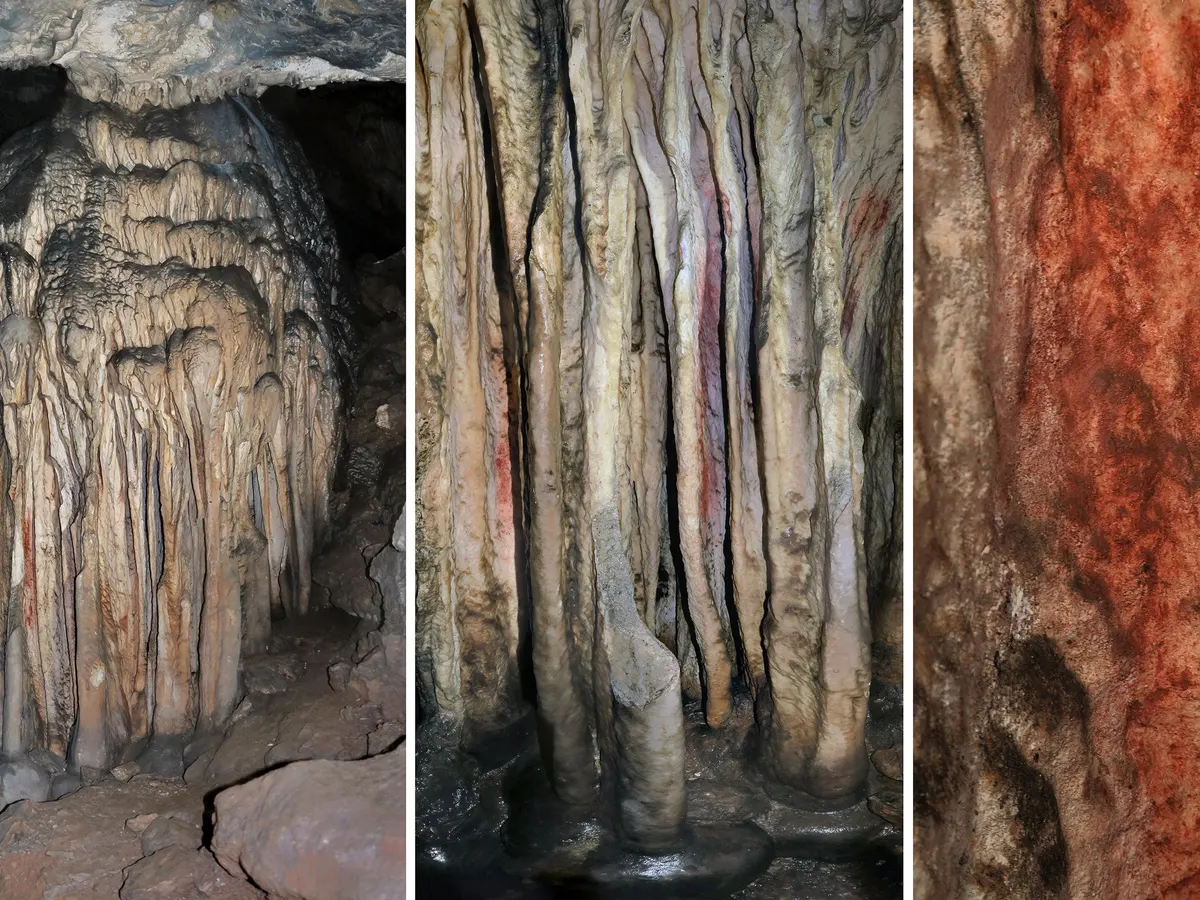By: Sammy Wang
Researchers found ancient artwork in an old cave in France, the La Roche-Cotard. The art is a bunch of strange markings varying from dots, to stripes, and lines. Researchers concluded that the artwork was around 75,000 years old and created by the Neanderthals.
The Neanderthals were human ancestors who roamed the lands around 400,000 years ago to about 40,000 years ago before modern humans came to be. They didn’t have that much of a chin, but they had large noses. Other than that, they were similar to humans known today. Neanderthals ate things similar to humans, meats, plants, and mushrooms. They also developed tools of their own for survival and entertainment. These tools included a chopping rock, an end scraper, and a flake-blade core.
One of the things they made was artwork, for example, the ones researchers found in La Roche-Cotard, Langeais, France. Although researchers haven’t depicted the meaning behind the painting, it is still fascinating to look at!
The technique the Neanderthals used for their artwork is known as finger fluting. Finger fluting is marks left by fingers on soft surfaces like caves. Paintings using finger fluting are most likely seen in the Upper Paleolithic era (50,000–40,000 years ago until about 10,000 years ago).
Other researchers found markings on caves such as Cueva de Ardales in Spain have a red color to them, leading them to investigate it more. They took multiple samples and concluded that Neanderthals occasionally returned to the caves to remark on their artwork. Presumably, to preserve it.
In 2014, Professor Clive Finlayson of the University of Toronto and his team discovered a craving in Gorham’s Cave, Gibraltar, suspecting that a Neanderthal made it. With further investigation, they found markings left in various places, such as dark caves.
“Some of these things are placed in the very darkest bits of caves, where you couldn’t do it by accident. You need a light source, you’ve got to wander through passages, and you’ve got to prepare your pigments,” Finlayson said.
Despite not knowing the meaning behind the marks, Finlayson was satisfied with finding them. He hopes to discover more about the Neanderthals and their traditions in the future.
As time goes by, there are still many things to discover. Even though researchers and scientists may not understand the Neanderthals, it is still an important aspect of human evolution that they wish to uncover.
Sources:
https://www.bbc.co.uk/newsround/66003142
https://www.bbc.com/news/science-environment-43115488
https://www.amnh.org/exhibitions/permanent/human-origins/neanderthal-tools











